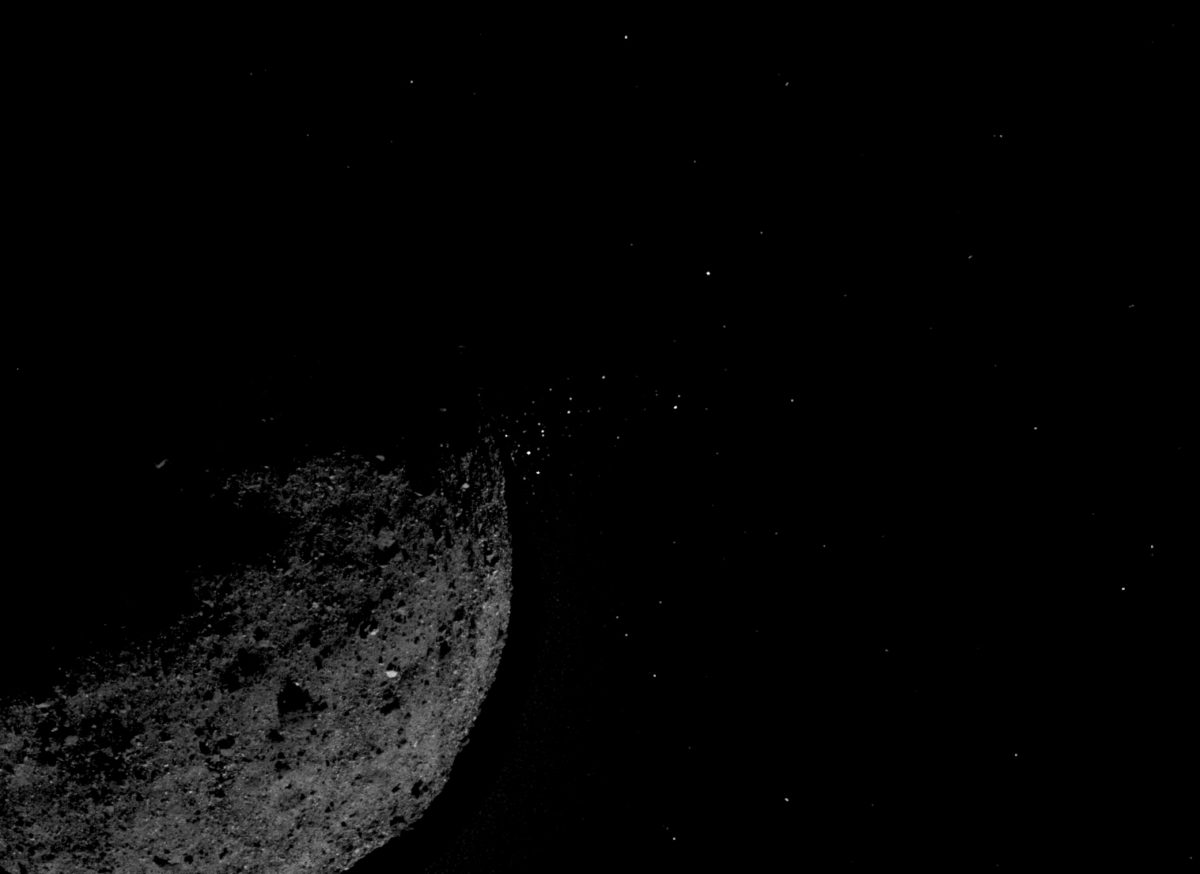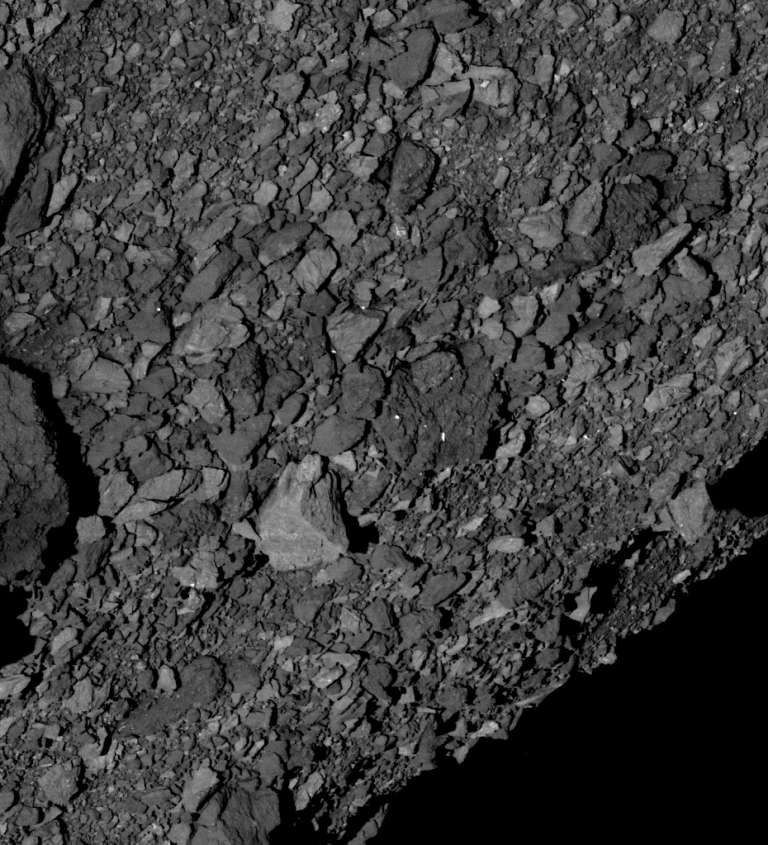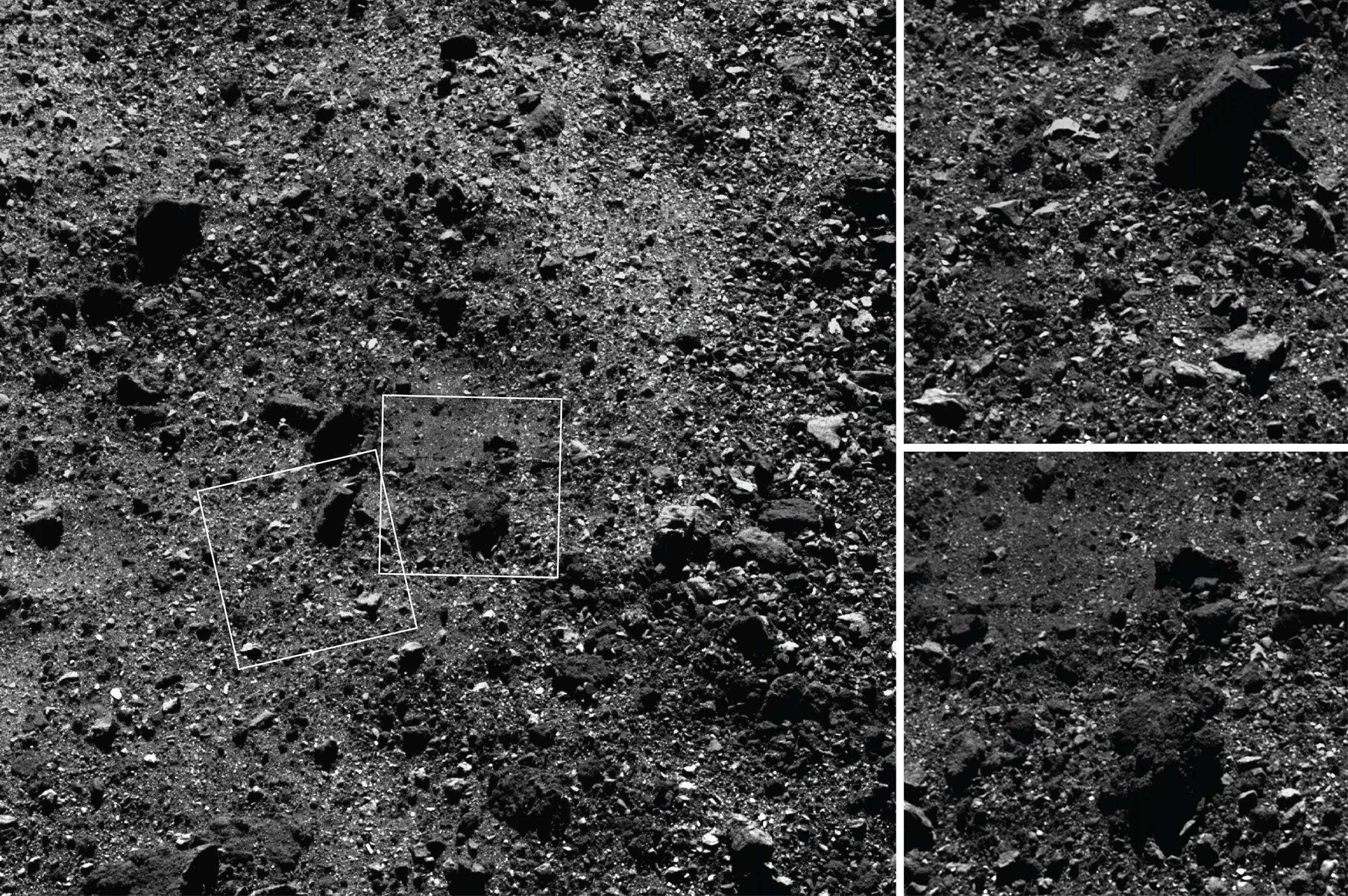Jason Davis • Mar 19, 2019
OSIRIS-REx sees Bennu spewing stuff into space
Asteroid Bennu regularly ejects surface particles into space, scientists from NASA's OSIRIS-REx mission announced today. The discovery puts Bennu in a class of so-called "active asteroids," and marks the first time a spacecraft has ever seen the phenomenon first-hand. Principal investigator Dante Lauretta called the discovery "one of the biggest surprises of my scientific career." Mission scientists also provided updates on Bennu's rotation rate and the plan to collect a sample of regolith from the surface next year.
Surface spewing
The mission updates came from a newly released Nature paper (paywalled), a presentation at the 50th Lunar and Planetary Science Conference at The Woodlands, Texas, and a call with reporters today. OSIRIS-REx first saw the phenomenon in optical navigation camera images on 6 January 2019, and has since seen it occur 10 more times. Each ejection event can involve dozens or hundreds of particles ranging in size from millimeter-sized sand grains up to several-centimeter cobbles. The ejection speeds have varied from a few centimeters up to about 3 meters per second, meaning that some material falls back to the surface, some enters orbit briefly, and some escapes Bennu's gravity entirely.

Bennu is now one of about a dozen active asteroids that share at least some characteristics with comets. The OSIRIS-REx team doesn't know what's causing Bennu particles to suddenly jump off of the surface. The first step in understanding the process is to trace the flying particles’ paths back to their sources.
The discovery was a surprise because these ejection events weren’t detected from Earth, though there was at least some speculation ahead of OSIRIS-REx's arrival that Bennu might be an active asteroid. Upon learning that Bennu was active, NASA performed an analysis using orbital debris models for Earth orbit to see if the particles posed any danger to OSIRIS-REx, and determined the spacecraft was safe.
Another interesting bit of trivia is that the particle ejections could, in theory, be associated with an annual meteor shower here on Earth; such a shower would happen in September, in the southern hemisphere.
Rotation rate
One of the mission's major goals was to measure the Yarkovsky effect, a force caused by the asteroid's continual absorption of solar radiation and re-radiation of heat as it rotates in and out of sunlight. The Yarkovsky effect is one part of a larger effect called YORP that can alter an asteroid's trajectory, which is important for tracking potentially hazardous near-Earth asteroids.
Bennu's rotation rate has been increasing since 1999, and now, OSIRIS-REx observations have concluded that this increase is caused by the YORP effect. Just how much of an impact does this force have on Bennu? Every 1.5 million years, its rotation rate will double! Scientists believe YORP can eventually spin asteroids fast enough to break them apart, and it could be a contributing factor behind Bennu's particle ejections, though Lauretta cautioned it's too early to tell.
Sample collection
As we've previously noted, Bennu is much more rugged than expected. Ground-based radio astronomy led the OSIRIS-REx team to believe the surface was mostly covered in centimeter-size particles, which informed the design of TAGSAM sample collector. The team now knows Bennu is covered in boulders, 200 of which have been found to have diameters greater than 10 meters.

Fortunately, there appear to be a few fine-grained "regolith ponds" 10 to 20 meters across that might be ideal for sample collection:

That’s a smaller target than the OSIRIS-REx team had originally planned to hit. The team is already calling the eventual collection activity a "bulls-eye tag"; if the spacecraft was a dart simply aiming for a dartboard before, it's now trying to hit the bulls-eye.
Fortunately, the spacecraft's guidance and navigation performance at Bennu has been much better than expected. Coralie Adam, the OSIRIS-REx flight navigator for KinetX Aerospace, said OSIRIS-REx's positioning at Bennu is better than GPS back on Earth. OSIRIS-REx will continue to survey Bennu throughout 2019, and begin conducting detailed reconnaissance of potential sample sites this fall. Sample collection is still on track for July 2020.
The Time is Now.
As a Planetary Defender, you’re part of our mission to decrease the risk of Earth being hit by an asteroid or comet.
Donate Today

 Explore Worlds
Explore Worlds Find Life
Find Life Defend Earth
Defend Earth

